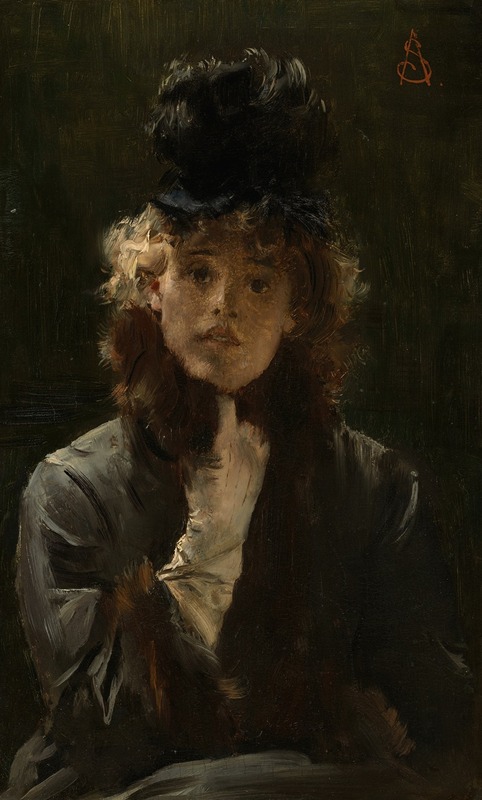
The Parisian Sphinx
A hand-painted replica of Alfred Stevens’s masterpiece The Parisian Sphinx, meticulously crafted by professional artists to capture the true essence of the original. Each piece is created with museum-quality canvas and rare mineral pigments, carefully painted by experienced artists with delicate brushstrokes and rich, layered colors to perfectly recreate the texture of the original artwork. Unlike machine-printed reproductions, this hand-painted version brings the painting to life, infused with the artist’s emotions and skill in every stroke. Whether for personal collection or home decoration, it instantly elevates the artistic atmosphere of any space.
The Parisian Sphinx is a painting by the Belgian artist Alfred Stevens, a prominent figure in 19th-century European art. Known for his refined depictions of women in elegant interiors, Stevens created this work in 1875. The painting exemplifies his mastery in portraying the fashionable Parisian bourgeoisie, a recurring theme in his oeuvre.
The artwork features a seated woman, dressed in an elaborate gown, exuding an air of mystery and sophistication. Her pose and expression suggest a sense of introspection or detachment, which aligns with the title's reference to a "sphinx," a symbol often associated with enigma and allure. The setting is a richly decorated interior, characteristic of Stevens' attention to detail and his ability to capture the opulence of the era. The interplay of textures, from the softness of the fabric to the sheen of the furniture, highlights Stevens' technical skill and his focus on materiality.
Alfred Stevens was deeply influenced by the cultural milieu of Paris, where he spent much of his career. His works often reflect the social dynamics and aesthetic sensibilities of the time, particularly the role and image of women in society. "The Parisian Sphinx" is a testament to his ability to blend realism with a subtle sense of narrative, inviting viewers to ponder the inner life of his subject.
The painting is currently housed in the Musée d'Orsay in Paris, France, which holds a significant collection of 19th-century art. It is considered one of Stevens' notable works, showcasing his contribution to the genre of portraiture and his unique perspective on modern life during the Belle Époque.
Stevens' art was highly regarded during his lifetime, and he was celebrated for his ability to capture the elegance and complexity of contemporary women. "The Parisian Sphinx" remains an enduring example of his talent and continues to be appreciated for its artistic and historical significance.


















